Alien Invaders
This blog entry will be updated during the year as plants come into season.
What's a Native and What's an Alien?
As I’ve been wandering around the woodland I’ve realised that there’s quite a few “alien invaders”. No, I’m not talking about funny green men but about some of the species that are in the woodland.
To be Native a plant should have either arrived naturally since the last glaciation or was present at the end of the glaciation1. An Alien is where the plant was introduced by humans2. We also have to consider where a tree is Native eg the Beech tree is regarded as being native to England and Wales but an alien to this part of Scotland. However, because they have been around so long they are sometimes classed as naturalised. As there are gardens on two sides of the woodland there have been several flowers species that are not native either. These may have been self-sown, dropped by birds or animals or introduced in garden waste that has been dumped in the woodland.
So what if they aren’t native, does it really matter?
Sometimes, no it doesn’t, as both the alien and native plants co-exist quite happily. Other times, yes it does matter as the non-native species (flowers, trees even animals) have a competitive advantage which allows them to outperform native species. That means, that they can become dominant in an area and we end up with less of the native plants.
Globally there is a problem with biodiversity. It is in decline. We can help improve diversity by planting more native plants. Lets look at an example. In the woodland there are some native Oak trees. Those trees will support about 423 insect and mite species and 324 lichen species3. A large number of trees in the woodland are beech, which is an introduced (alien) species. In contrast they will only support approximately 98 insect and mite species and 206 lichen species3. Quite a difference, particularly amongst insects and mites.
Why do natives support more species?
It’s due to the amount of time that they have been around. The trees and the other species they support have evolved together since the last glaciation, many thousands of years ago. The aliens are relatively new and they don’t have the same evolutionary history alongside the other species eg lichens, mites, insects etc.
This blog was originally published on:
and subsequently modified on:
Table of Contents
Monkey Puzzle cone (Araucaria araucana)
Pineappleweed (Matricaria discoidea)
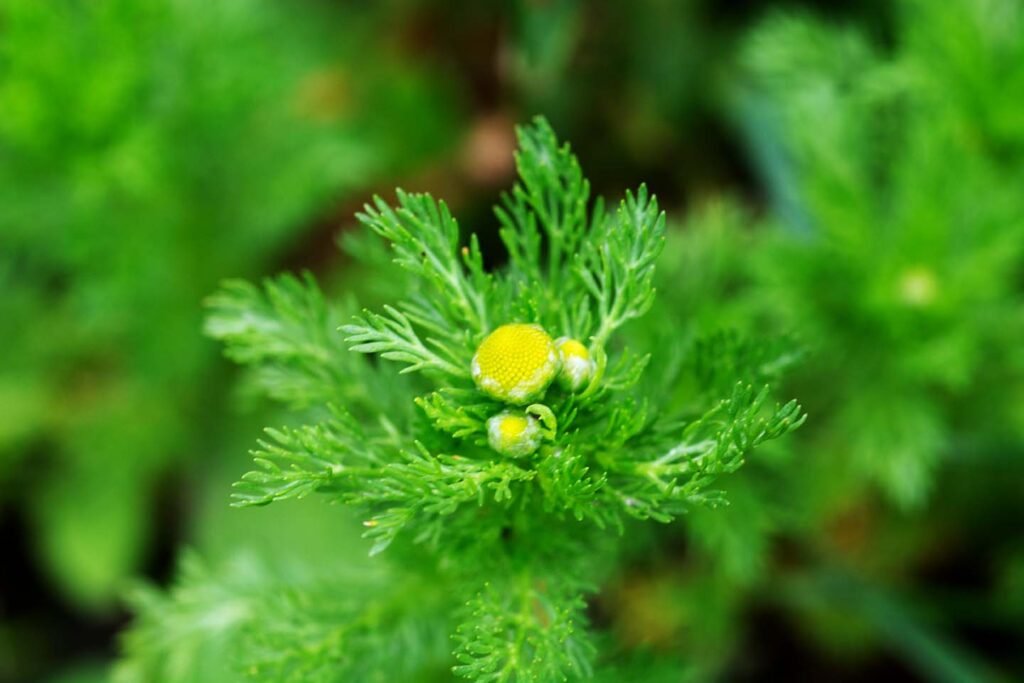
Cotoneaster (Cotoneaster sp.)
Lady’s Mantle (Alchemilla sp.)
Rosa Rugosa
Noble Fir Cone (Abies procera)
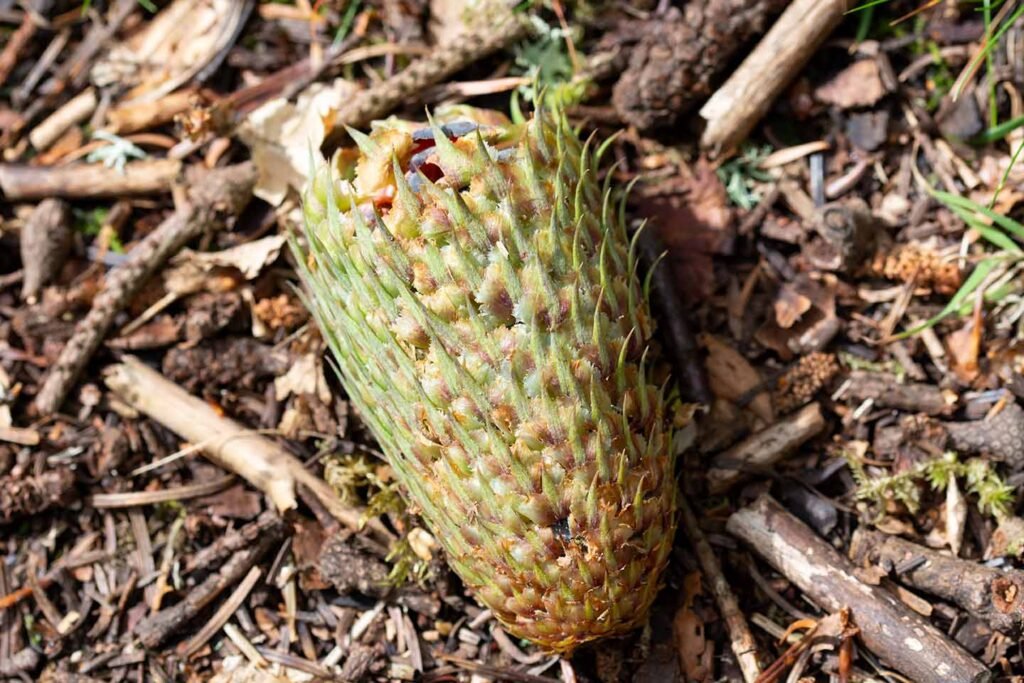
Perennial Cornflower (Centaurea montana)
Beech Must ( Fagus sylvatica)
Geranium (Geranium sp.)
Wood Anemone - Alba Plena
Star of Bethlehem
Bee on Rhododendron (Rhododendron ponticum)
Rhododendron Flower (Rhododendron ponticum)
Rhododendron Ponticum – full spread
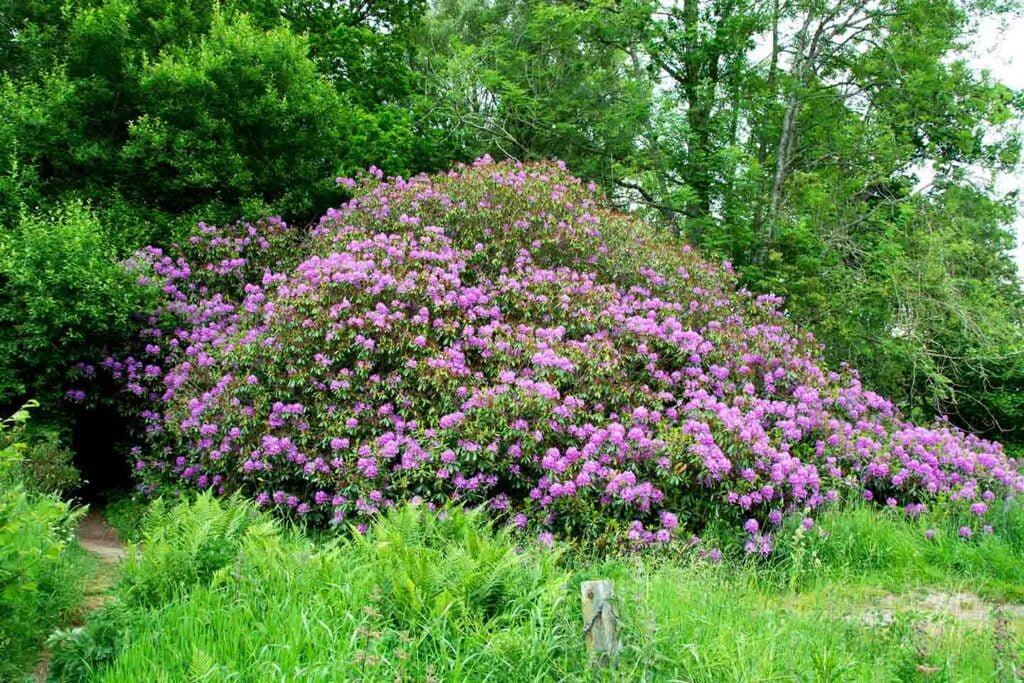
Leopard's-Bane
Euphorbia

Bluebells
There are several clumps of bluebells in the woodland. I do have a questionmark as to whether they are all native to this woodland. While I have checked on pollen colour and flower position and they look like natives I suspect that they are a later introduction and may have come from a cultivated plant. I have also included these in The Natives page.
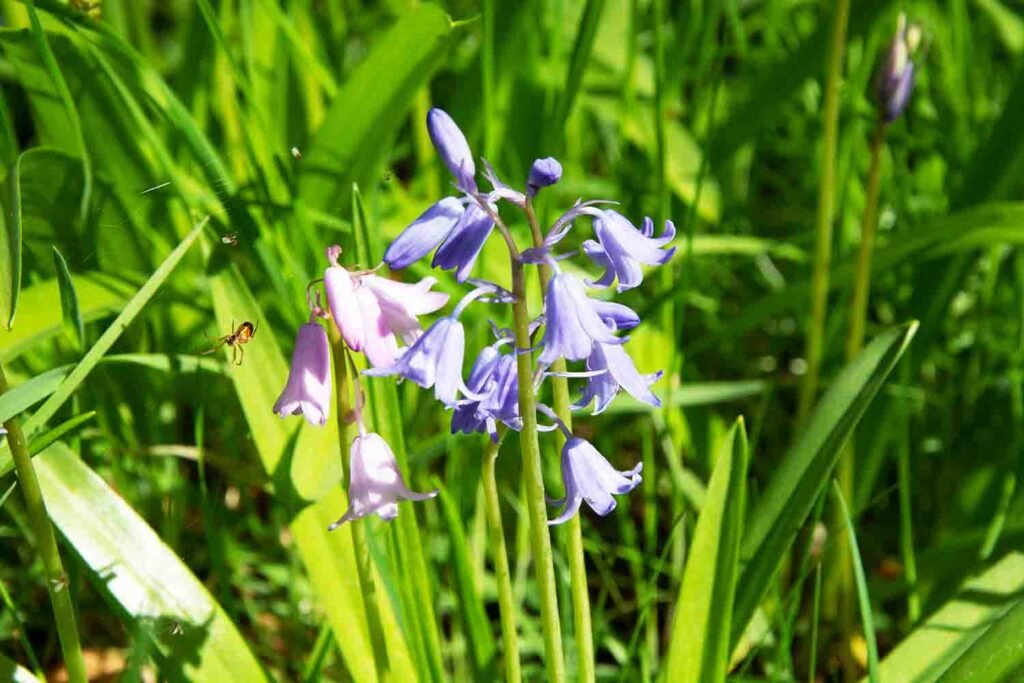
Tuberous Comfrey
This is another plant which I have a question about. This was originally recorded as being native to Scotland but in more recent years it has been reclassified. I have therefore included it in both this page and The Natives page.
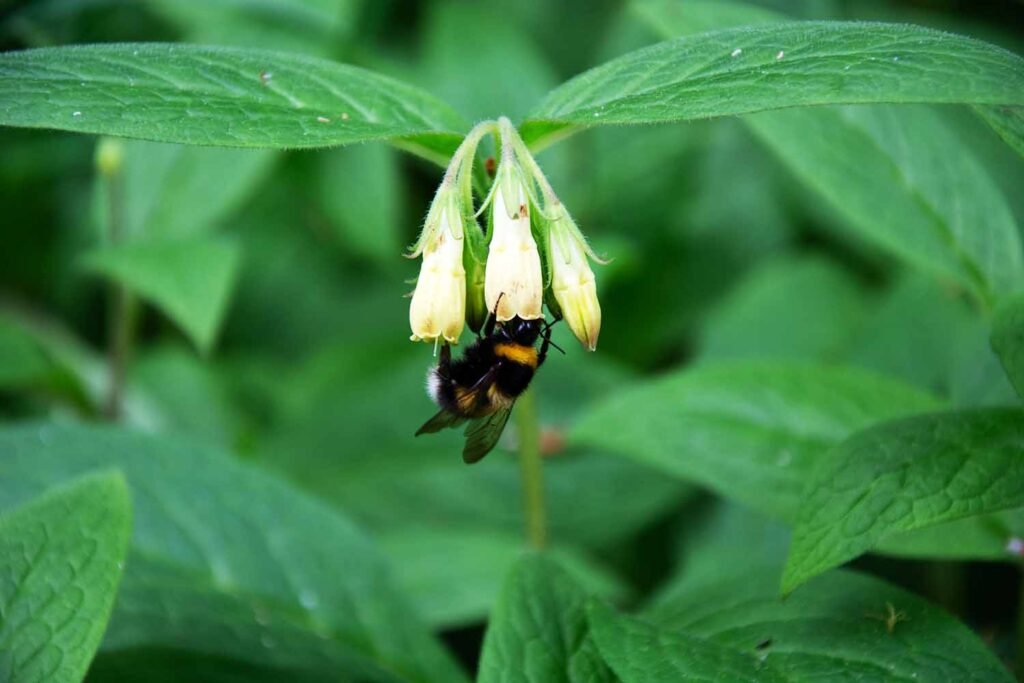
Yellow Archangel
Flowering Currant
Pink Purslane
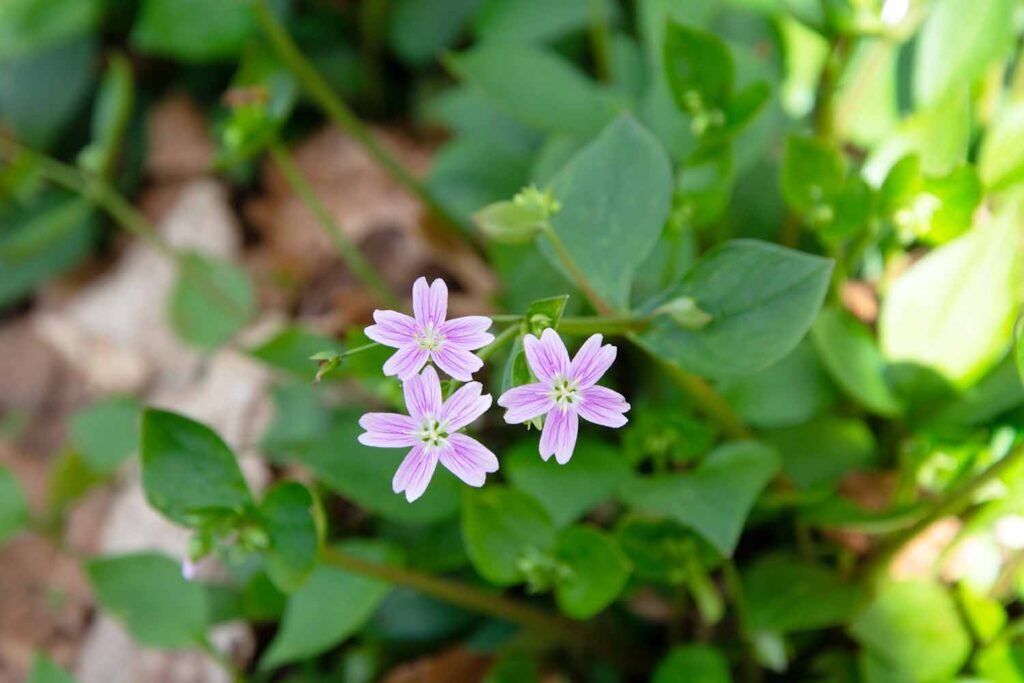
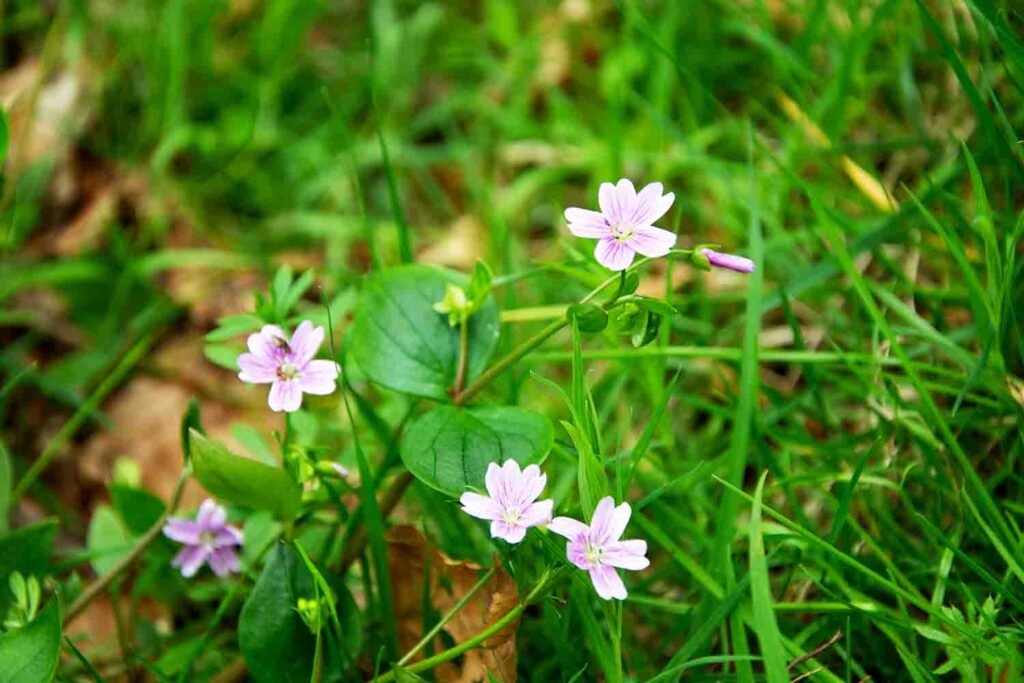
Squill
There are two different clumps of Squill (Scilla). The one clump which is on the right is as you come into the woodland from the Dunglass Road entrance, near the dog poo container. I suspect that these may be Spring Squill (Scilla verna) which is native to Scotland. However their natural habitat is on coastal grasslands rather than woodland.
The other patch of Squill are near one of the entrances from Dunglass Road quite near to the passing place. I suspect these are Striped Squill (Puschkinia scilloides) which aren’t native to Scotland. As this plant is near to dumped garden waste I suspect they have made their way into the woods that way.
Spring squill
Striped Squill
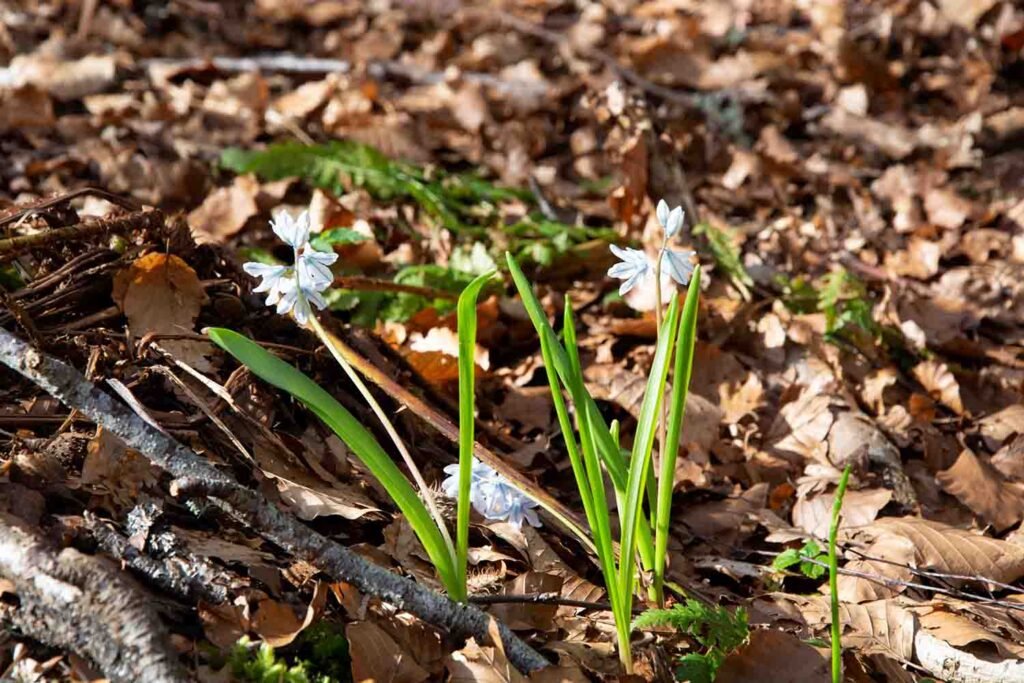
Periwinkle
Daffodils
Woods and Daffodils
Trees
In one section of the woodland there are the “Memory Trees” which were planted by visitors to Brahan Estate in the 1800s. These are really mature trees. They are also not native (aliens). However, I’m going to look at two of the most prolific non-native spreading trees that are in the woodland.
Beech
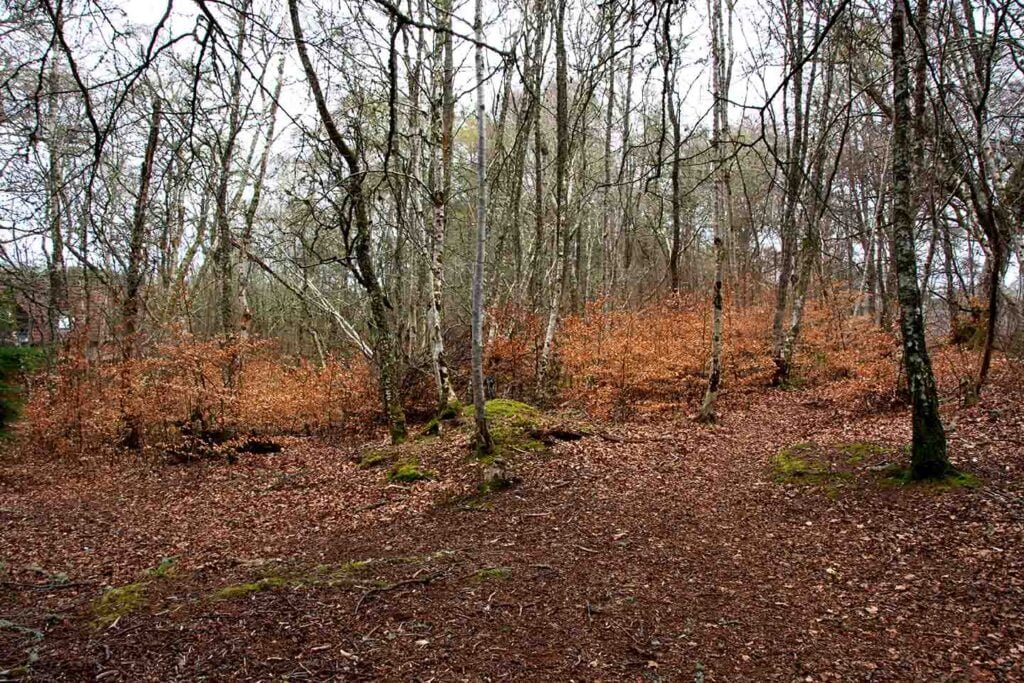
Western Hemlock
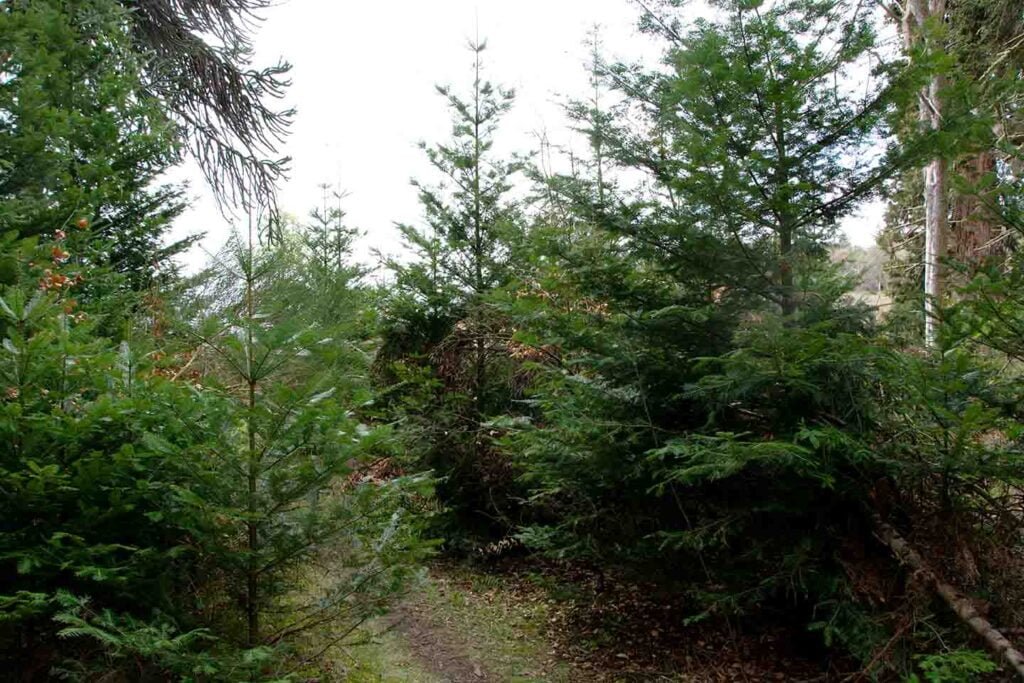
References:
1, 2 – Botanic Society of Britain & Ireland
3 – Offwell Woodland & Wildlife Trust
In addition to these I have used the following reference books and websites extensively. Without them you would have had a page of photos with very little else.
Plant Atlas – https://plantatlas2020.org/atlas/2cd4p9h.ff9
Scott, M (1995), “Scottish wild flowers”, Collins Guide
Rose, F (1981), reissued 1991, “The wild flower key – British Isles – NW Europe”, London: Penguin Books Ltd
Fitter, R, Fitter, A and Blamey M (1978), 2nd Edition, “The wild flowers of Britain and Northern Europe”, Glasgow: William Collins Sons and Co Ltd
If you want to visit the official Maryburgh Community Woodland site please click on this link
This blog was originally published on:
and subsequently modified on:





















